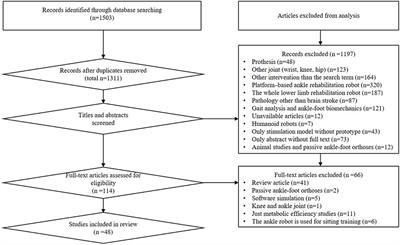ORIGINAL RESEARCH
Published on 30 Jun 2020
Pneumatic Quasi-Passive Actuation for Soft Assistive Lower Limbs Exoskeleton

doi 10.3389/fnbot.2020.00031
- 13,797 views
- 45 citations
16k
Total downloads
82k
Total views and downloads
You will be redirected to our submission process.
ORIGINAL RESEARCH
Published on 30 Jun 2020

ORIGINAL RESEARCH
Published on 08 May 2020

ORIGINAL RESEARCH
Published on 12 Mar 2020

ORIGINAL RESEARCH
Published on 27 Aug 2019

SYSTEMATIC REVIEW
Published on 13 Aug 2019

ORIGINAL RESEARCH
Published on 24 Jul 2019

